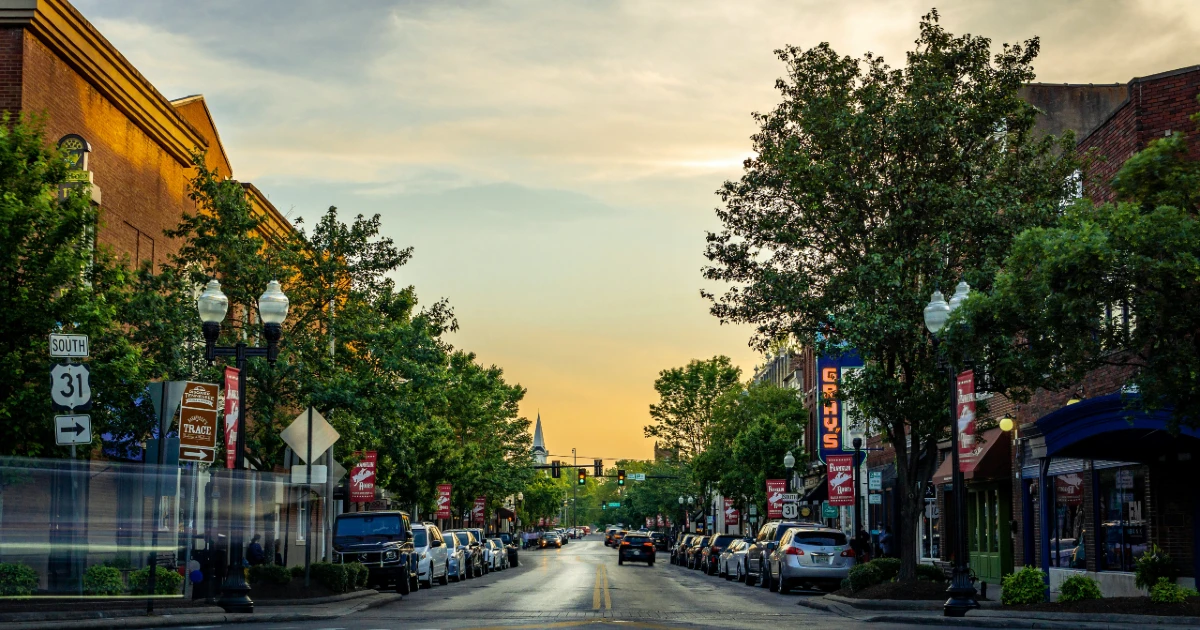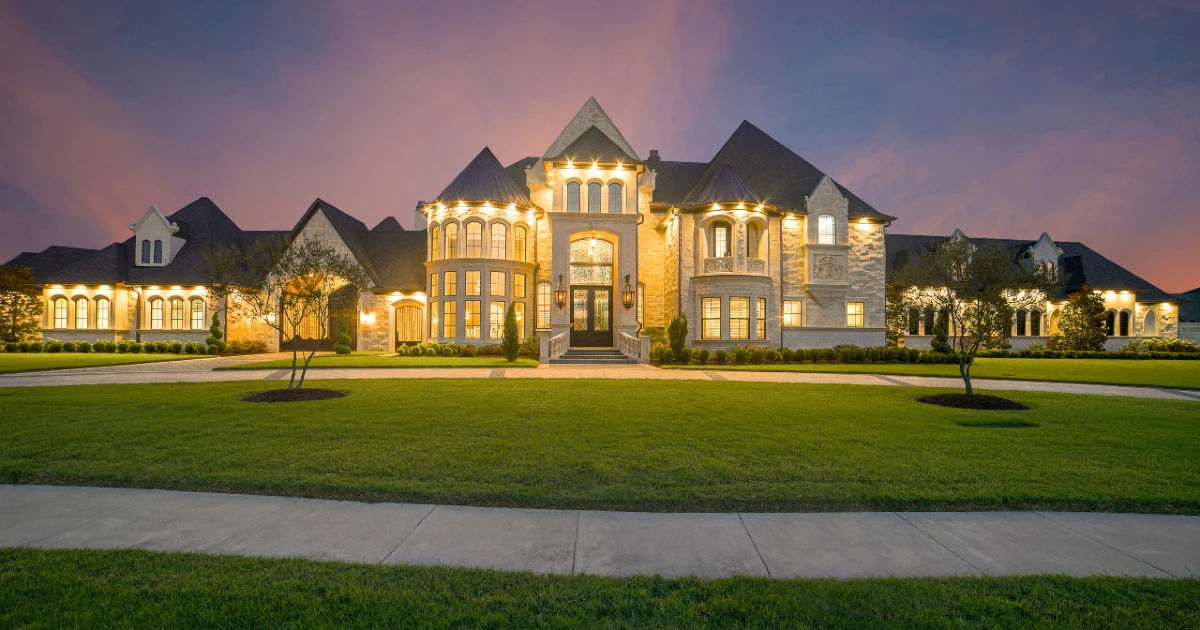Philadelphia Real Estate Market Overview
The Philadelphia real estate market has exhibited noticeable growth, characterized by a steady increase in housing prices and a swift turnover of listed properties.
Current Market Trends
Housing Supply: The inventory of the Philadelphia real estate market has been dynamic, fluctuating with changes in buyer demand and seasonal trends. As of February 2025, there were 14,480 homes for sale, which offers a glimpse into the supply dynamics of the market.
Median Sale Price: Median sale prices have seen an uptick, with a reported average house price of $365,000 in the previous month, marking a 2.7% increase since the same period last year. This is indicative of a robust market where property values appreciate over time.
Market Trends: The speed of sales is also noteworthy, with homes moving quickly from listing to pending status — the average period being around 16 days, suggesting that demand remains vigorous.
Median Rent: The rental market has also followed an upward trajectory, although specific figures for the median rent in this period have not been disclosed.
Sale-to-List Price: The sale-to-list price ratio is a critical marker of market health. While current specific percentages are unavailable, a competitive sale-to-list price ratio in recent times would point towards a sellers' market.
Recent Performance
The Philadelphia housing market's performance has been strong when assessing it over the last year. Home values in the region have seen a substantial increase. For example, Zillow reports that the average home value in the Philadelphia-Camden-Wilmington area stands at $343,102, reflecting a significant 6.7% increase compared to the previous year.
January 2025 versus February 2025: Comparing monthly data points, such as those from January and February, can reveal short-term trends, but such specifics are not provided at this time.
Year-over-Year Comparison: The year-over-year analysis shows that the Philadelphia housing market has been experiencing steady growth, making real estate in Philadelphia a noteworthy investment option.
Interaction with the data from various points in time, including last year's performance and more recent statistics like those from January 2025 to February 2025, points towards the dynamic nature of the Philadelphia housing market. The overall market trends suggest a healthy real estate environment, marked by a consistent increase in median sale prices and a strong demand that influences the housing supply.
Housing Inventory Analysis in Philadelphia
In recent times, the Philadelphia housing market has shown signs of supply constraints with inventory levels that have struggled to meet buyer demand. Median home prices have seen a significant uptick due to these inventory pressures.
Current Inventory Levels
Philadelphia's current housing inventory is reflective of a market with supply dynamics that tend to favor sellers. As noted in a report analyzing the Philadelphia housing market trends, the average home value in the Philadelphia-Camden-Wilmington area stood at $343,102, marking a substantial rise over the previous year. The number of homes for sale plays a pivotal role in this valuation. At present, homes are moving into a pending status quickly, averaging around 16 days on the market.
The number of new listings also serves as a vital indicator of how the market is faring. A comparison of housing inventory by bedroom type for the area shows both a rise and a decline in new listings across various home sizes, suggesting nuanced shifts in the types of homes entering the market.
Housing Supply Dynamics
When analyzing the housing supply dynamics in Philadelphia, it is important to consider both the vacancy rate and the median home price. The vacancy rate directly impacts the housing supply and is an indicator of the housing inventory health. A comprehensive market analysis highlights significant trends in the Philadelphia real estate market, considering economic conditions and population changes.
The Philadelphia housing market experienced a rise in home prices in January 2025 by 6.1% compared to the previous year, with a median price of $249K. Additionally, despite a high demand for real estate in Philadelphia, the available inventory has not been sufficient to satisfy the needs of potential buyers, implying a low vacancy rate.
The supply constraints noted may be attributable to various economic and demographic factors. However, they underscore the importance of examining both the current state and the underlying trends when considering real estate investments or purchasing decisions in Philadelphia.
Pricing Insights in Philadelphia
This section provides a detailed examination of the current state of housing prices in Philadelphia, painting a picture of the trends and how they stack up against the national figures.
Average Prices and Trends
As of January 2025, the median sale price of homes in Philadelphia shows a notable increase, indicative of a competitive market. According to Redfin, homes in Philadelphia had a median sale price of $249K, marking a 6.1% increase from the previous year. Meanwhile, properties are moving faster, with an average of 56 days on the market, a decrease from 61 days the year before. Furthermore, a Philadelphia Housing Market Trends and Forecast for 2025 report suggests a strong upward trajectory for the Philadelphia housing market forecast with expectations of continued growth into the following year.
Comparison to National Figures
Compared to the National Association of Realtors reports, Philadelphia's real estate prices reflect a distinct market behavior. While the national median sale price is not specified here, Philadelphia's average property value, paired with its faster selling time, is suggestive of a strong local demand for housing. Housing prices in the Philadelphia metro area, as per the forecast report, have surpassed the average, showing a rise with an average price of homes positioned at $343,102, indicating a tighter and more competitive market than many regions nationwide.
Buying and Selling in Philadelphia
The Philadelphia real estate market shows robust activity, with properties moving from listing to pending status swiftly, indicative of a competitive environment for both buyers and sellers.
Time on Market
Properties in Philadelphia have been experiencing a relatively short days on market (DOM). Recently, homes have been moving into pending status within an average of 16 days, emphasizing a fast-paced market. This trend signifies that well-priced houses in desirable locations are likely to attract multiple offers quickly after listing.
Impact of Mortgage Rates
Higher mortgage rates can influence buyer affordability and subsequently the real estate market dynamics. Mortgage rates are closely watched by market participants, as even a small hike can reduce the buying power, potentially softening the sale-to-list price ratios. However, the Philadelphia real estate scene has continued to show resilience, with sustained buyer interest despite fluctuations in mortgage rates.
Neighborhood Profiles in Philadelphia
Philadelphia's real estate market is as diverse as its neighborhoods, with each area offering a unique set of characteristics for potential homeowners and investors. From the bustling streets of Center City to the charming avenues in emerging locales, the city's landscape offers a variety of options catered to different preferences, including walkability and transit access.
Emerging Areas
In recent times, new listings have highlighted the rising popularity of certain Philadelphia neighborhoods. These areas, often on the cusp of development, present exciting opportunities for buyers seeking growth potential. For instance, neighborhoods like Fishtown have transformed into vibrant communities attracting a mix of young professionals and families.
Emerging neighborhoods to watch include Fishtown, Brewerytown, and Point Breeze. These areas are experiencing notable growth and development, making them promising locations for prospective homebuyers and investors alike.
Walkability and Transit
When it comes to walkability and transit, Center City stands out as the heart of Philadelphia's walkable urban areas. Renowned for its convenience and pedestrian-friendly atmosphere, it is often considered one of the best places to retire due to the ease of access to amenities and healthcare. Additionally, other Philadelphia neighborhoods score highly on the walkability index, making the city an attractive option for those who prefer to traverse the city on foot or by public transportation.
Highly walkable areas in Philadelphia include Rittenhouse Square, Old City, Midtown Village, and Society Hill, offering residents convenient access to amenities, dining, and entertainment. Key transit hubs such as Suburban Station in Center City, 30th Street Station in University City, and Jefferson Station in Market East provide efficient transportation options for commuters and travelers throughout the city.
Philadelphia, PA's overall landscape offers an appealing mix for urban dwellers, with select neighborhoods providing a suburban feel within city limits. Whether one prioritizes a dynamic, walkable environment or searches for emerging markets with growth potential, Philadelphia's real estate scene has distinct profiles to fit various lifestyles and investment strategies.
Investment Potential in Philadelphia
In analyzing the investment potential of the Philadelphia real estate market, one must consider the nuanced dynamics of its rental market along with the overarching appeal to investors based on current trends and economic forecasts.
Rental Market Dynamics
The rental market in Philadelphia has displayed considerable resilience, with a robust demand that influences both affordability and housing inventory. Data suggests a promising median rent, which benefits from the city's growing population and the appeal of its diverse neighborhoods. As of 2025, homes are being swiftly leased, marked by a decrease in the vacancy rate. This brisk activity in the rental sector indicates a potentially lucrative environment for real estate investors seeking stable, long-term cash flow.
Market Attractiveness for Investors
When it comes to market attractiveness for investors, the Philadelphia housing market stands out due to its strategic Northeast location and affordability when compared to other major East Coast cities. Current market conditions show a noteworthy trend of property values appreciating, suggesting that investors can expect a favorable return on investment. Moreover, with investment offerings from trending neighborhoods like Fishtown, characterized by its appealing demographics and artistic vibrancy, Philadelphia presents varied opportunities for those looking to expand their real estate portfolios.
Economic Indicators in Philadelphia
The real estate climate in Philadelphia is influenced by various economic indicators, chiefly among them being interest rates and demographic shifts. These factors impact everything from mortgage rates to the cost of living, affecting homeowners and potential buyers in the region.
Interest Rates and the Economy
Interest rates are a significant factor in the Philadelphia real estate economy. They determine the cost of borrowing and, as a result, influence a buyer's ability to afford a new home. For instance, if interest rates rise, potential buyers may find the mortgages less affordable, which can lead to a cooling of the market.
- Mortgage Rates: Current interest rate trends, either climbing or descending, alter the monthly payments potential homeowners in Philadelphia will face.
- Philadelphia Region: Compared to regions such as Austin or Harrisburg, the unique economic landscape of Philadelphia influences local interest rates and affordability.
Demographic Trends
Demographic changes shape the long-term outlook of the Philadelphia real estate market. Age distribution, income levels, and population growth contribute to the demand for housing and the types of properties that are sought after.
- Cost of Living in Philadelphia: It’s an important determinant for the inflow of residents, affecting the dynamic between renters and buyers.
- Homeownership Trends: They reflect shifts in local demographics and can illustrate the evolving needs and economic capabilities of the population.
Overall, understanding these economic indicators is vital for assessing the health and direction of the Philadelphia housing market.
Market Projections in Philadelphia
The upcoming sections provide a focused overview of the current expectations for the Philadelphia real estate market. The analysis draws on recent trends and industry forecasts to outline short-term estimations and long-term projections.
Short-Term Forecasts
In the short-term, Philadelphia's real estate market is seen to undergo rapid changes. According to information gathered from a leading industry source, the average home value in the Philadelphia-Camden-Wilmington area has experienced a notable rise, highlighting the market's momentum as we approach the second quarter of 2025. The data suggest that homes have been moving quickly to a pending status in just about 16 days on average.
Long-Term Market Outlook
As for the long-term outlook, expectations for the Philadelphia housing market remain optimistic. Real estate analysts forecast that by the end of 2025 going into 2026, we may observe a significant improvement in home sales. The projections indicate a potential for strong growth, as backed by a ranking from the National Association of Realtors which placed the Philly metro area in the top 10 markets. This is attributed to factors such as pent-up demand from both buyers and sellers.
Frequently Asked Questions
The Philadelphia real estate market is dynamic, with various factors influencing prices and trends. These FAQs distill the most pertinent aspects to consider in 2025.
What trends are shaping the Philadelphia housing market in 2025?
The Philadelphia Housing Market Trends and Forecast for 2025 indicates an appreciation in home values with a substantial 6.7% increase over the past year. Homes are entering the pending status swiftly, averaging around 16 days on the market.
How have home prices in the Philadelphia suburbs changed recently?
Home prices in the Philadelphia suburbs have seen variable changes; some areas are experiencing growth due to demand, while others are stabilizing after a period of rapid growth. Specific data on recent changes can be found in local real estate reports.
What factors contribute to the affordability of real estate in Philadelphia?
Affordability in Philadelphia real estate hinges on supply and demand, interest rates, and economic factors such as employment rates. The affordability of real estate in Philadelphia is also impacted by its educational and healthcare sectors that drive sustained housing demand.
Are there any emerging neighborhoods in Philadelphia for real estate investment?
Emerging neighborhoods in Philadelphia present opportunities for real estate investment, thriving on revitalization efforts, infrastructure improvements, and increasing local amenities. These areas often attract homebuyers and investors seeking long-term growth.
What is the median home price in the Philadelphia suburbs?
As of early 2025, the median home price in the Philadelphia suburbs was about $215,000. This figure can vary widely depending on the specific suburb and local market conditions.
Have home prices in Philadelphia experienced a decline recently?
The median sale price for homes in Philadelphia recently decreased to $250K, a drop of 9.07% compared to the previous year. This suggests a re-balancing of the market after substantial growth.






.png)
.jpg)
.jpg)


.png)